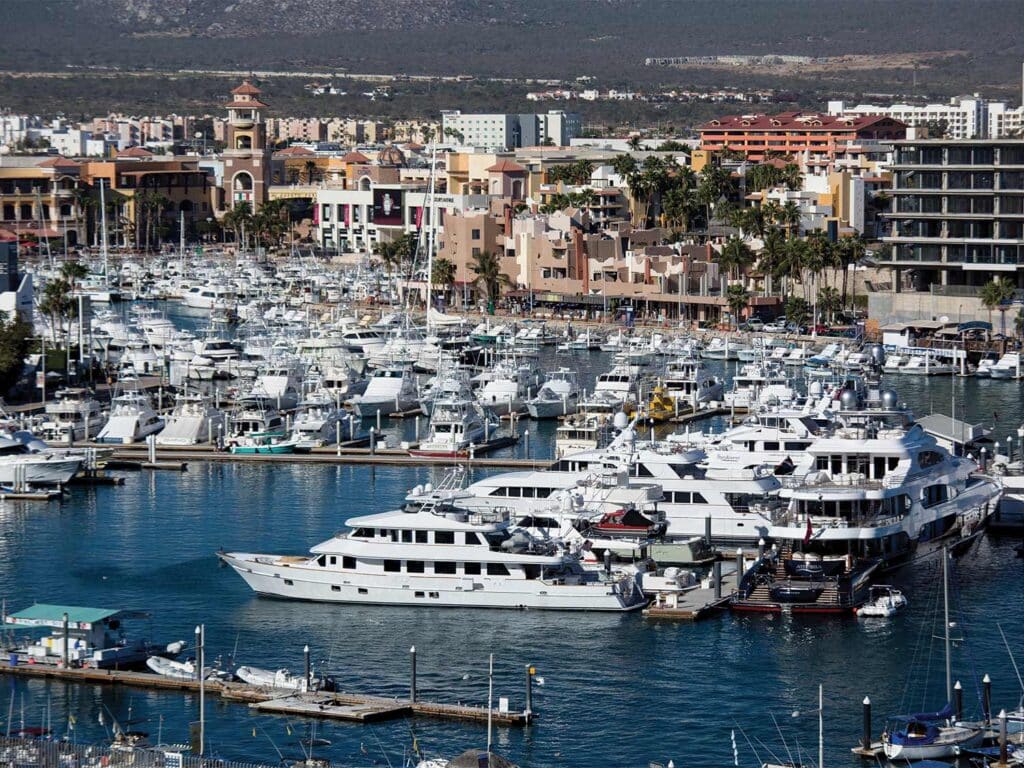
Special delivery: Sign up for the free Marlin email newsletter. Subscribe to Marlin magazine and get a year of highly collectible, keepsake editions – plus access to the digital edition and archives.
While the numbers vary from season to season, there is no doubt that Los Cabos, Mexico, has rightfully earned a reputation as one of the world’s top destinations for all types of billfish. The total number of blue, black and striped marlin caught there each season is unparalleled, and it continues to attract anglers from across the globe.
But it wasn’t always like that. This region, which includes bustling Cabo San Lucas as well as the more laid-back San Jose del Cabo—now connected by a highway lined with luxurious resorts and immaculate golf courses—was once quite different. The 1970s was the coming-of-age decade that would see this area grow from a dusty fishing village to the world-class destination it is today.
Striped Marlin: The Word Spreads
As the Southern California sport-fishing scene began to grow, owners of larger boats were intrigued by the reports of the prolific year-round fishery that was centered on the relatively uncrowded waters off Cabo, some 770 nautical miles south of San Diego. Those with limited fuel capacity resorted to lashing drums of diesel on their decks or swim platforms in order to make the trip because there was only one very iffy fuel source at Turtle Bay, about 330 nautical miles south of the border. That was it.
Stateside yachtbuilders began to recognize the need for larger, more sophisticated boats with the fuel capacity and creature comforts to make the voyage to Baja’s tip and beyond safely and in style. A host of builders stepped up their games: Pacifica, Elliot, Delta, Blackman, Innovator, Marlineer, Ocean Pacific, Bertram, Hatteras, Knight & Carver, Skipjack, and Livesay were just some that responded to that demand. These so-called yacht-fishers changed the game for decades to come.
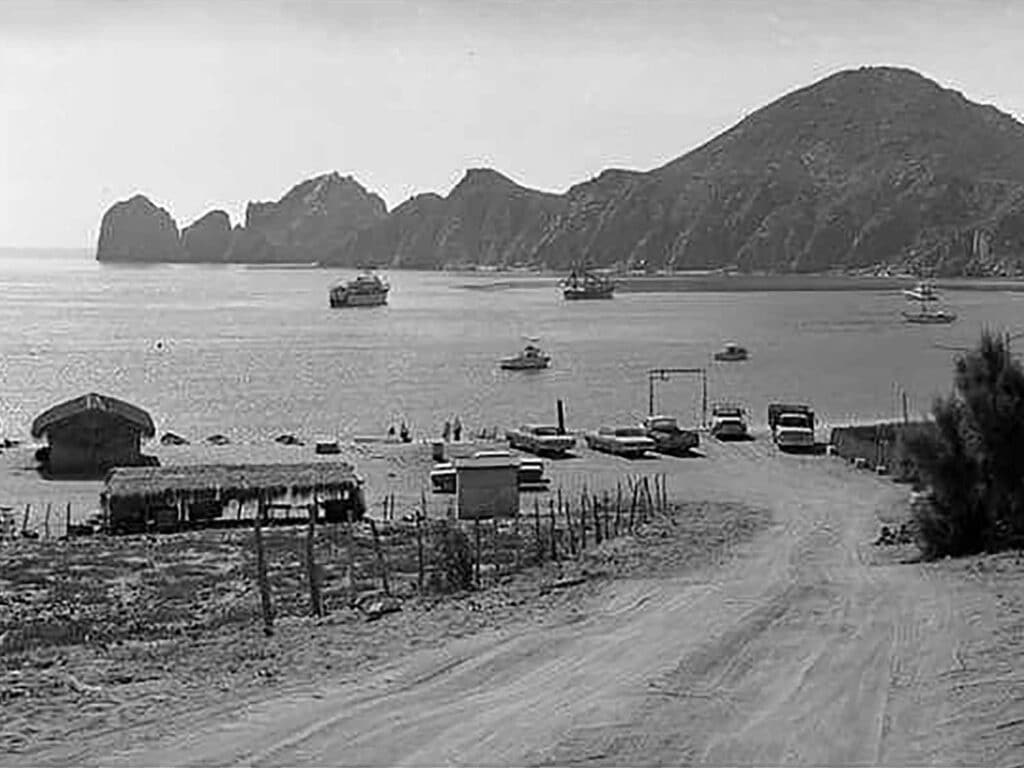
Remote Destinations, Memorable Voyages
During those early days, I made the trip both north and south to those storied waters many times. On one voyage from San Diego, we made it to Turtle Bay on fumes, and then had to wait for fuel to be delivered some 24 hours later. One of the most memorable trips I’ve made was bringing Steve Cushman’s Hardhead, a 48-foot custom wooden cruiser, from Cabo back to California. Unfortunately, the boat had mechanical issues that delayed our departure. Doc Ross—an Englishman and a local mechanic who had somehow ended up working in Los Cabos—had an employee named Jorge who worked on the boat for a week, repairing the issues so that we could depart. We decided to take Jorge along as insurance, just in case something else broke en route. We set off with a crew consisting of my wife, Yvonne, a deckhand named Craig Miller, Jorge the mechanic, and me as captain.
We headed out from Cabo in the pre-dawn gray light, with the fuel tanks filled to the brim. Barring any surprises, it would be enough to make it to San Diego, assuming we traveled at 8 knots the entire way.
The trip began uneventfully with perfect weather; by midday on the third day, we were somewhere above the Thetis Bank, traveling in smooth, calm seas. We had a pair of trolling rods out and had already caught some dorado for dinner that evening. Yvonne, Craig and I were chatting on the bridge when suddenly, both rods bent over, the clickers clattering and line flying off the reels. Two striped marlin greyhounded away from the boat. As I looked around from the bridge, there were billfish feeding and free-jumping in every direction. It was just a few minutes after releasing those two that we had another double on. Throughout the rest of the day, the bites continued. Then, late in the afternoon, when we decided that we should resume our trip north, the starboard engine suddenly died.
Jorge struggled to diagnose the problem. Although it turned out to be something simple, we didn’t have the replacement part needed to fix it; we were underway on one engine with our fingers crossed.
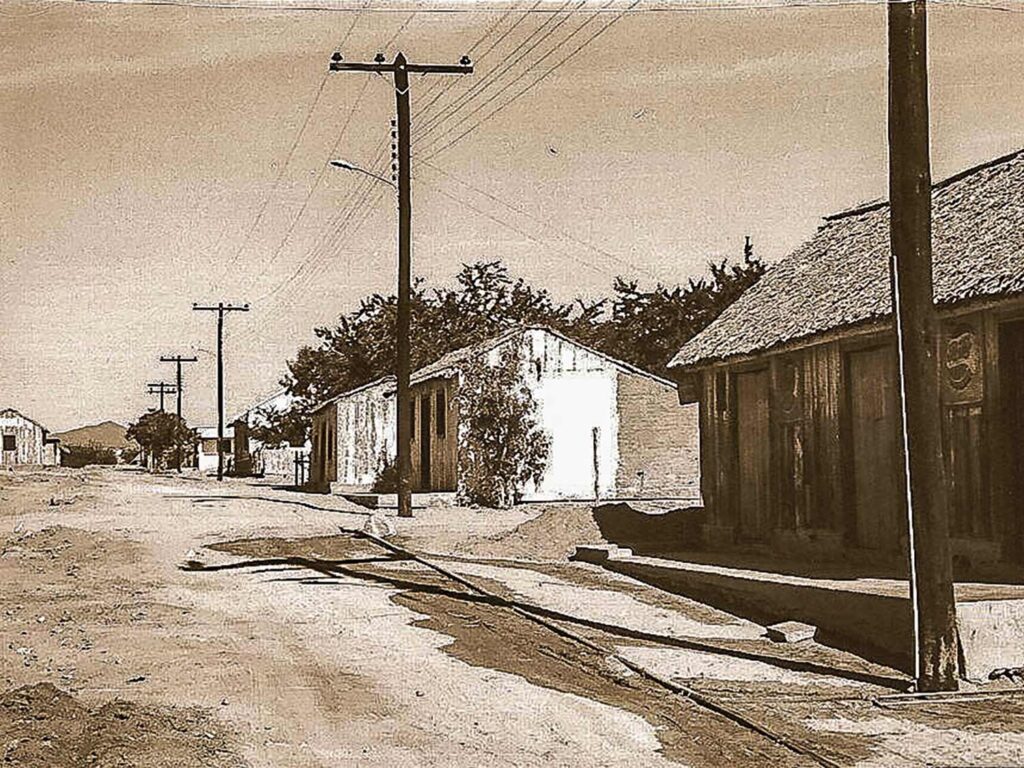
As we continued north, we reviewed the number of fish we had released. Yvonne caught and released 10, a new personal best for her that remains all these years later. And Miller had caught 15 or more, all in just a few hours.
Just before nightfall, making matters worse, the port engine began smoking, leaving a telltale smoke trail behind us for miles. We held our breaths, hoping that our remaining engine would not fail.
We planned to drop off Jorge in Ensenada so that he could return to Los Cabos by bus. When we finally pulled into the bay, our smoking engine was enough to attract a fellow in a skiff who came speeding alongside. He hollered: “Is the boat on fire? Do you need help?” We assured him that we were OK but would appreciate a ride to shore for Jorge.
The trip from there to San Diego Bay seemed to take forever as we nursed our way home on one smoking engine. Finally, after convincing the border agent that we did not have any contraband on board, we cleared customs and headed for Lloyd’s fuel dock on Harbor Island, our tanks nearly dry.
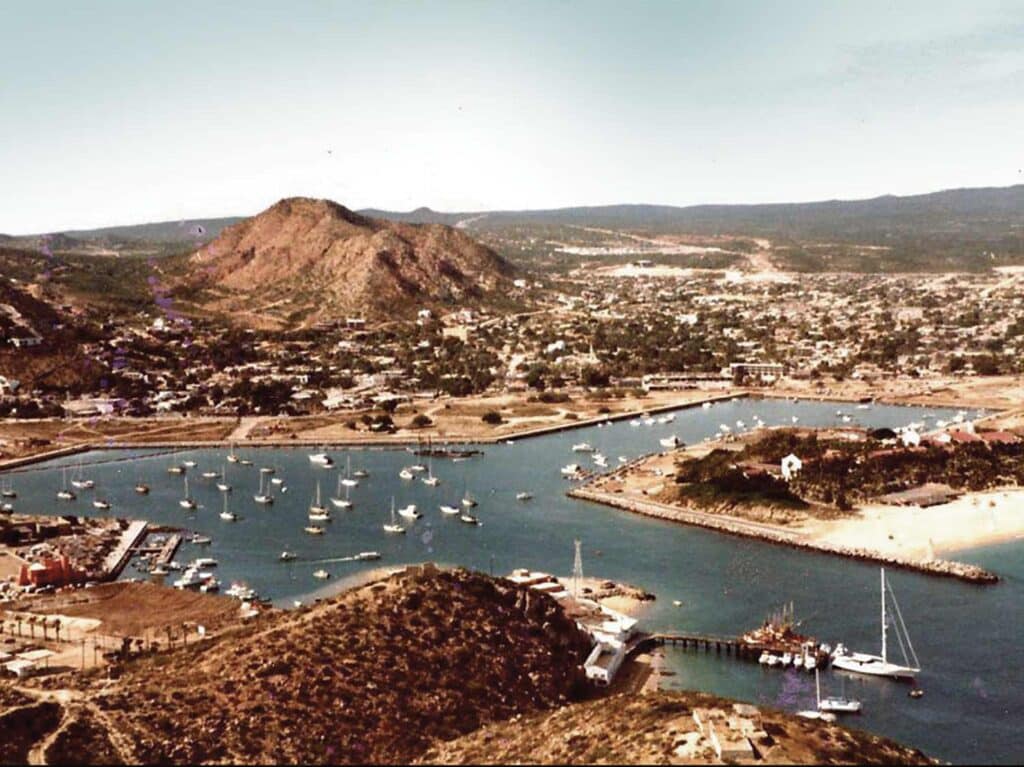
Fish Hard, Party Harder
Back in 1976, Cabo San Lucas was still just a sleepy little fishing village with no marina, dirt roads, and just a couple of small hotels and restaurants. Then Minerva’s Baja Tackle opened. Minerva Smith and her husband, Bob, soon established the business as one of the area’s best tackle sources, with the largest supply of fishing rods, reels, lures, terminal tackle, and fishing apparel in the region. It remains a must-visit destination today, and Minerva herself is one of the best sources for up-to-date information on what’s going on in Cabo San Lucas.
Around the same time in the mid-1970s, dredging equipment was brought to Cabo, deepening the harbor entrance and allowing oceangoing ferryboats from the Mexican mainland as well as larger sport-fishers to enter the marina. Ultimately, the project became an impressive 380-slip, 33-megayacht berth operation that can accommodate boats up to 375 feet. The amenities include a fully operational boatyard, and a fuel dock with high-speed pumps, water, and pump-out services.
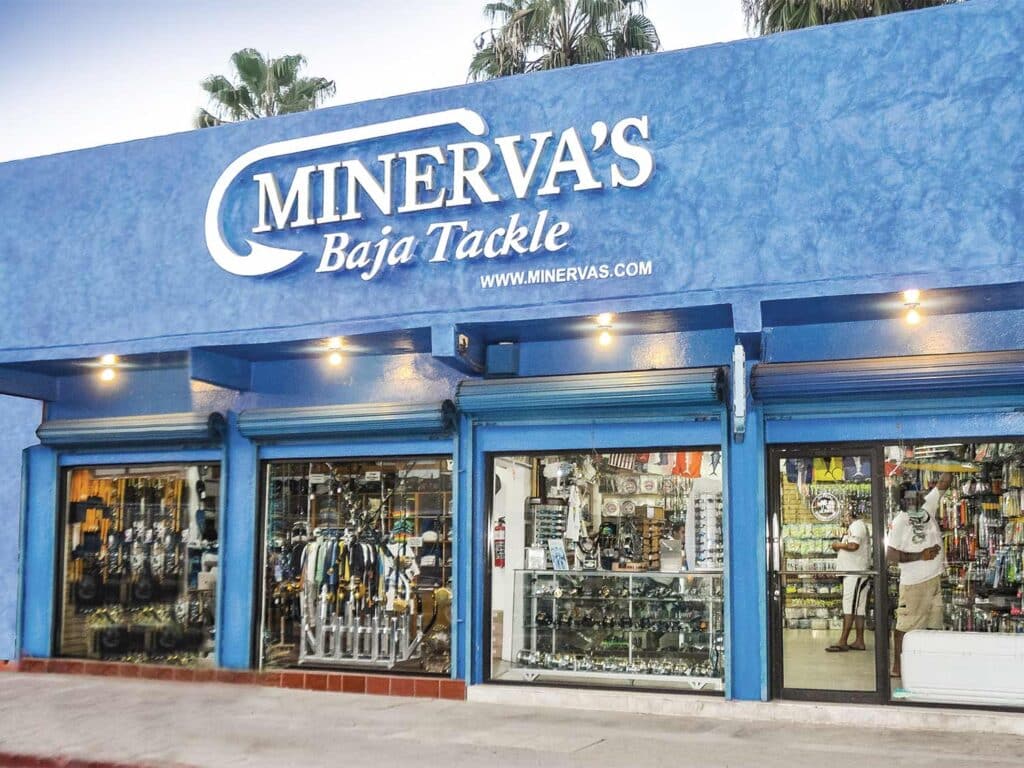
The Los Cabos region went from 10,000 residents in 1970 to an all-time high of 287,671 in 2015. With that came a corresponding rise in the number of visiting boats, targeting everything from billfish to wahoo, yellowfin tuna and dorado, plus a dizzying array of inshore species such as roosterfish, grouper and snapper.
In those early days, legendary professional Southern California captains and crews mingled with casual boaters and others from all parts of the country, with everyone helping out one another. Each year, the number of visiting boats grew, and old-timers welcomed the newcomers, continuing to build a community of hardcore anglers bonded by a camaraderie of those who thrived on the “fish hard, party harder” lifestyle.
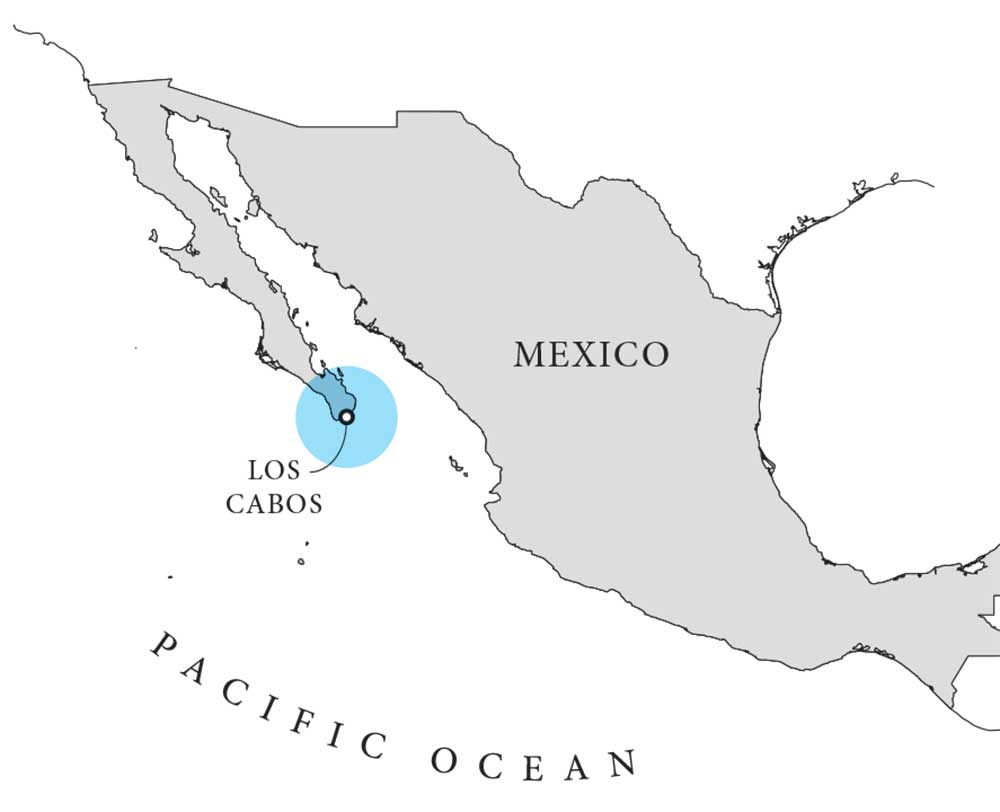
Cabo Links Up to the World
In December 1957, construction began on the 1,000-mile-long paved road connecting Baja Sur with the US—a massive project that would be completed in the waning days of 1973. Shortly after Mex 1 was completed, two friends from San Diego—UPI reporter David Lewis and Jim Sipman, a local architect—and I departed from Southern California in one of my Services Unlimited company vans. We spent several weeks exploring the new two-lane paved highway, plus many of the unpaved back roads, which led to Cabo San Lucas and back.
What an adventure: camping out every night, either on the Pacific or Sea of Cortez beaches; fishing from shore and catching an exotic array of species, many of which we could identify only with our dog-eared fish-ID booklet; and traveling mostly unexplored backcountry. Although I had gone to Mexico as a teen—and later to Loreto with my young son—those trips did not compare to this, exploring the beaches along the peninsula, camping on Gray Rock overlooking Los Cabos, and generally falling in love with Baja and its people. Since then, I have returned at least once every year, and usually, many times more. I have driven various vehicles, from station wagons and vans to my self-contained, fully equipped Roadtrekker, which I have driven more than 80,000 miles.
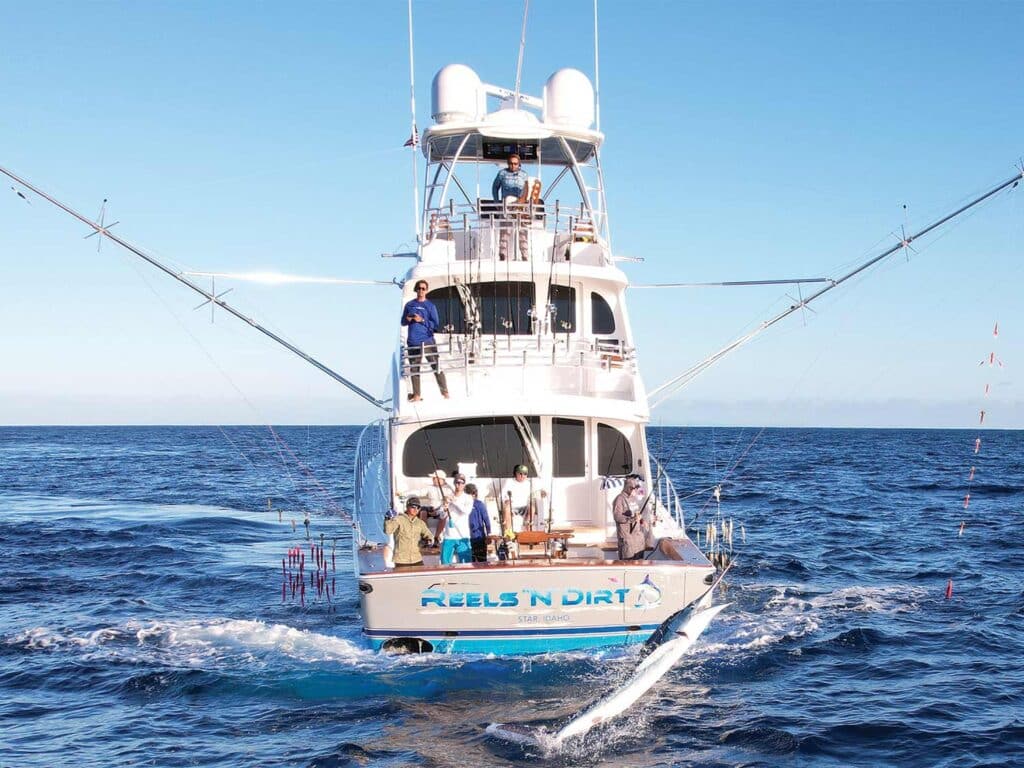
Meanwhile, the population of Cabo San Lucas grew from 400 people in 1955 to 16,059 in 1990; by 2010, the total number had reached 68,464. It was no longer a small, dusty fishing village.
In 1977, the palapa-roofed airport expanded and eventually became known as Norman Y. Mineta San Jose International Airport. International flights provided momentum for the fledging resort city, which gradually transformed Los Cabos into one of Mexico’s most popular vacation destinations.
Read Next: Learn more about the Los Cabos Billfish Tournament here.
Bob Bisbee, entrepreneur and owner of a fuel dock on California’s Balboa Island, set up the first land-based marine single-sideband radio to keep up with the boats traveling up and down the west coast. That radio was the lifeline—often literally—for crews to communicate with their families, boat owners, and others on those long voyages to and from Cabo.
Bisbee sold the fuel dock to JD Dougherty, and it is now JD’s Big Game Tackle. Dougherty has been a savior to many owners who’ve desperately needed a part, or who’ve broken down along the Baja Peninsula between Southern California and Cabo, where they’ve needed everything from hardware and engine parts to tackle.
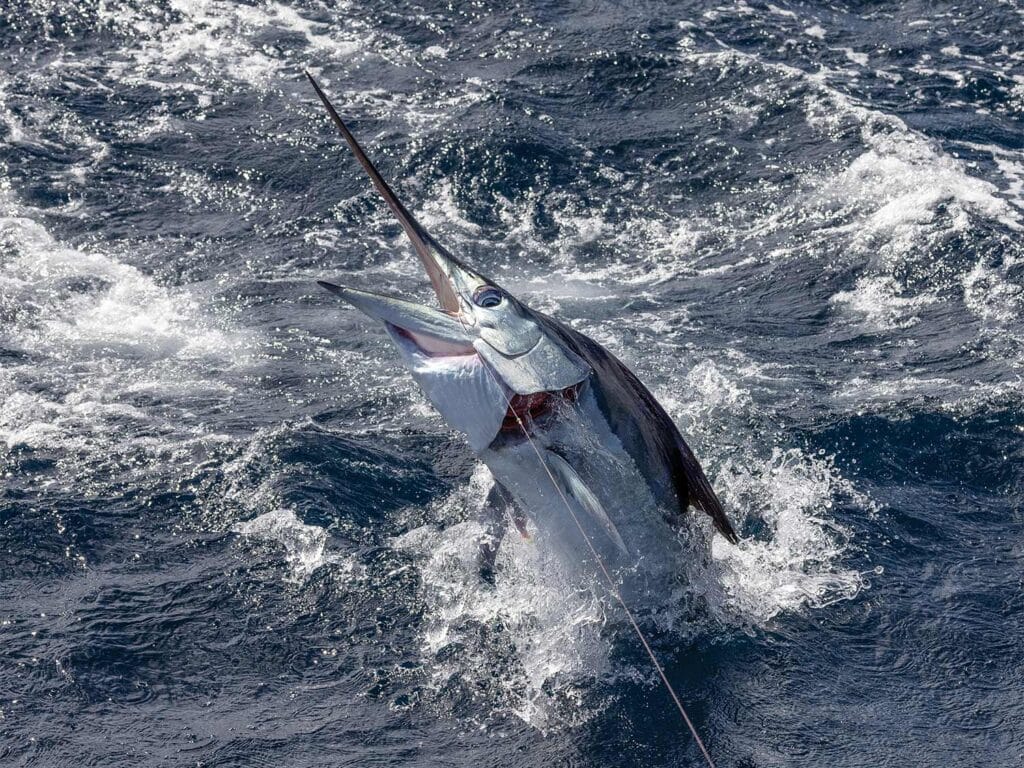
A Charter Fleet Comes of Age
Among many others, Marco and Tracy Ehrenberg were early pioneers of Cabo sport fishing, with the Pisces charter fleet. Arriving there in early 1978, Marco, always striving to give superb customer service, asked Tracy to assist him with the organization, management, follow-up and bookkeeping as the charter business grew.
Tracy soon became fluent in Spanish, quickly learning about the boats, the fishing, and how to manage the operation. Her dedication to service allowed the fleet to grow in size and range to what it is today: the largest fleet of fishing boats and cruising yachts on the peninsula.
“Pisces is the only charter company in the world where you can charter brand-new Vikings,” Tracy says. “That is the level of trust the owners have in us and in our high standards here in Cabo. It’s ideal for someone interested in purchasing a Viking because they can come to Cabo to fish one in a real-time and real-life situation.”
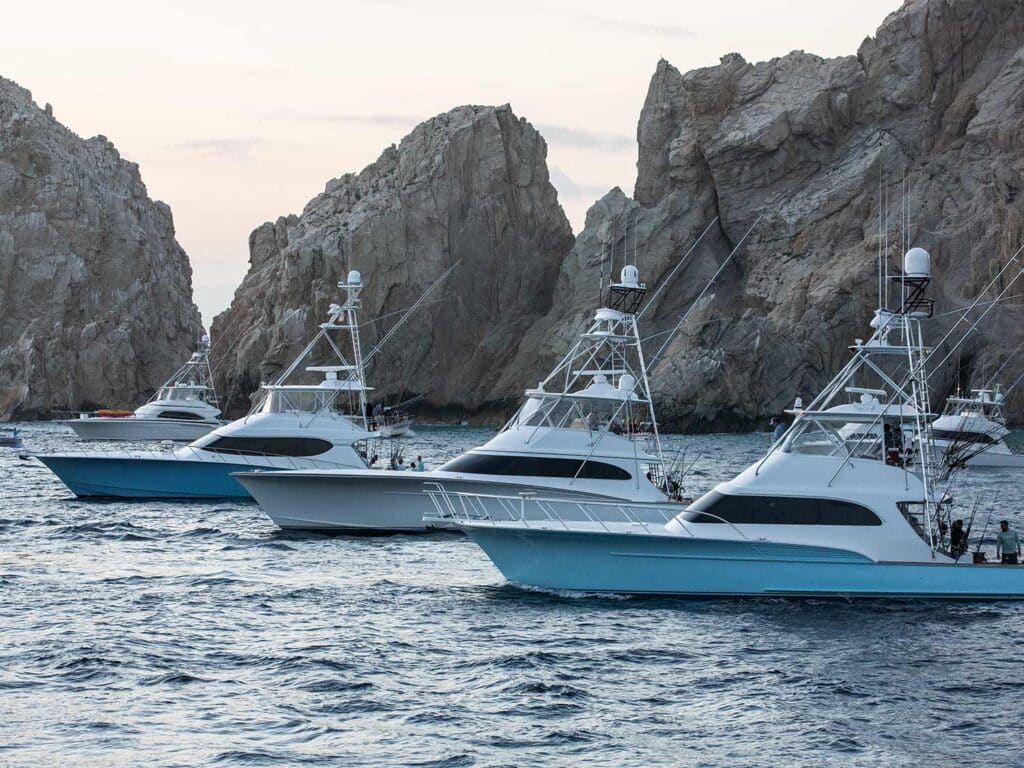
An example of just how good the fishing can be is in the catch report from just one Pisces boat in 2022. BB II, a 37-foot Viking, released more than 3,000 billfish, with a single-day record of 249 striped marlin with three anglers. They also had a two-day tally of 409 stripes, caught off the Finger Bank. The entire fleet scored a total of more than 13,000 billfish in 2022, doubling their release totals for 2021.
Tournaments can also bring fast-and-furious fishing. During the 2022 Los Cabos Billfish Tournament, the fleet of 53 registered teams caught and video-verified 138 billfish, including 91 striped marlin, 26 blue marlin, 19 sailfish and two black marlin. A total of $862,350 in cash was awarded as well.
It’s clear that the marlin fishing is as good as it ever has been in the past, and will continue to attract visiting anglers just has it has for decades. It’s just a lot easier to get there, and with a few more amenities to enjoy.
Learn From the Best
The marlin fishing off southern Baja is unique because most boats prefer to troll a standard spread of lures while visually searching for striped marlin on the surface. Once in position, their anglers will cast a live bait to the fish, which often results in an immediate response. It’s eyeball to eyeball, fisherman and marlin.
There are few better ways to learn the intricacies of this style of fishing than to have an expert show you the ropes. With a staff of trained professionals, Marlin Expeditions is just the ticket. These all-inclusive excursions give you a shot at some of the best fishing in the world, aboard the top boats, and with expert on-the-water instruction. In 2022, the Cabo Expedition resulted in more than 90 striped marlin releases; each trip hosts only 16 anglers who fish four per boat, plus crew and a professional instructor. To learn more, visit marlinexpeditions.com.







